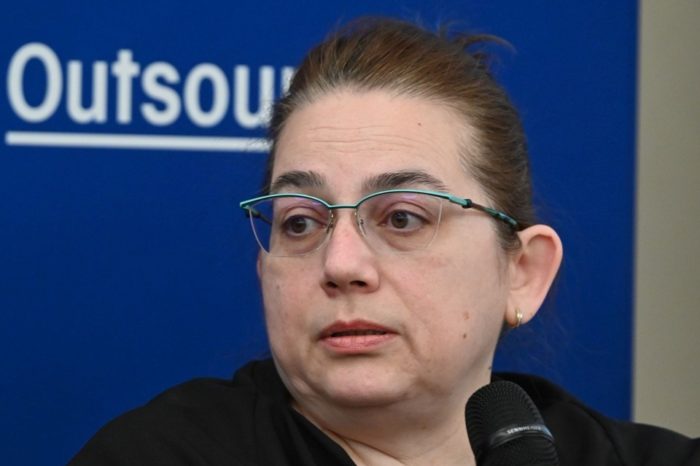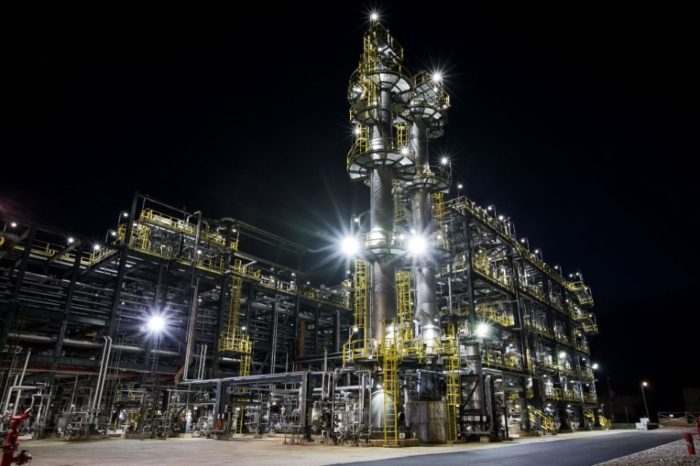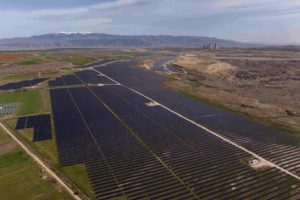Anca Pora, Green Fiber: “We are considering additional expansion of production capacities of finished products”

“Due to our significant presence into the automotive industry, we felt a decrease in demand in the first quarter of 2020. However, we’ve seen a fast recovery, and now we appreciate a better understanding of European customers about the fact that localizing a more important share of supply in Europe could be vital for a long-term strategy and the best solution to overcome a domino crisis as we faced in 2020,” Anca Pora, commercial director Green Tech and Green Fiber told The Diplomat-Bucharest.
“Our goal on medium and long term would be to maintain our position in the market as supplier of constant and premium quality of recycled polyester staple fiber. Depending on the future evolution of the collection systems in the region, we are considering additional expansion of production capacities of finished products such as: RPET granules, PET Strap or polyester staple fiber.”
How difficult is the process of obtaining recycled PET fibers? In what industries can these recycled fibers be used later?
The easiest way is to produce fibers out of virgin material but this is not the sustainable way. It is not the way to reduce CO2 emissions. On the other hand, recycling comes with significant challenges and here’s why.
First of all, because we have to turn a non-homogenous quality of raw material into high quality products, and this is not easy. We know this because we employ a fully integrated recycling system: we buy waste bottles (PET), process them into PET flakes, which in turn we transform into recycled fibers with multiple applications, in automotive and other industries as well. For this, we need to continuously invest in updating recycling technologies, in order to control the quality of the raw material, because it’s the only way we can also control the quality of the output.
The trend of assimilating deposit system schemes in CE Europe during the next years would help us to have access to a cleaner and less contaminated material.
Most of our recycled fibers goes into automotive, but also hygiene and healthcare, construction, home textile and filtration.
What is the annual production capacity of Green Fiber? How much recycled fibers percentagewise goes to the automotive industry?
We have a total production capacity of 80.000 tons/year. Approximately 55% goes in automotive for various components – visible or absorbent and insulations nonwovens as engine compartment with special fibers, passenger, and luggage compartment wheel arch liners.
Which are your biggest clients in the automotive industry?
Green Fiber supplies both Tier 1 and Tier 2 suppliers for the automotive industry and our main markets are Germany, Czech Republic, France, Turkey, and Spain. Therefore, you can find our recycled fibers in top automotive brands.
How would you describe the evolution of Green Fiber in 2020 in the context of the pandemic?
Due to our significant presence into the automotive industry, we felt a decrease in demand in the first quarter of 2020. However, we’ve seen a fast recovery, and now we appreciate a better understanding of European customers about the fact that localizing a more important share of supply in Europe could be vital for a long-term strategy and the best solution to overcome a domino crisis as we faced in 2020. The tendency to replace remote supply with regional supply works in our favour.
What are the challenges you are facing at the moment?
Shortage of PET bales, as the consequence of still undeveloped collection infrastructure in Europe.
PET is a raw material that is accessed by other applications as well, such as packaging. For example, packaging producers are obliged to use 25% recycled content in PET bottles by 2025 and this stimulates PET addition in new bottles.
What would be the most important projects for Green Fiber on medium and long term?
Our goal on medium and long term would be to maintain our position in the market as supplier of constant and premium quality of recycled polyester staple fiber. Depending on the future evolution of the collection systems in the region, we are considering additional expansion of production capacities of finished products such as: RPET granules, PET Strap or polyester staple fiber.
What to expect from your industry in 2021 in terms of development, how much room is for improvement and which are the aspects to be considered in this respect?
We are positive in regards to 2021 due to several aspects:
– European customers are expanding their production capacities and consequently the demand is increasing;
– 2020 crises taught us all a good lesson, that we were too dependent on Asian supply, in different sectors; starting from this experience, we are glad to see that more and more partners reconsider the supply chain and the strategic supply in Europe.
– Start of new fiber products for automotive, with special applications such as: hydrophobic, hydro-oleo phobic and frame retardant fibers.
– Better penetration of the hygiene market.
Established in Buzau in 2006, Green Fiber is currently one of the largest European producers of recycled PET synthetic fiber. It has production units in Buzau, Urziceni and Iasi. The production capacity of Green Fiber for synthetic polyester fiber is 80,000 tons / year.
During the production process in Green Fiber, PET flakes resulting from the sorting, grinding and washing of PET packaging are melted into thin filaments and transformed into synthetic fiber, a material that resembles wool.
Green Fiber sells synthetic fiber mainly for export to countries such as Germany, Italy, Denmark, the Czech Republic, Belgium, Slovenia, Turkey, and Hungary. The most important customers are companies in the automotive industry, which use fiber in the interior textiles of cars or for filtration systems. At the same time, fiber is a raw material for the hygiene industry, being part of baby diaper fillings, wet wipes or patches. It is also used in the furniture industry, as fillers for sofas, pillows, or duvets, as well as in construction, for insulation panels, roofing membranes or geotextile membranes.














